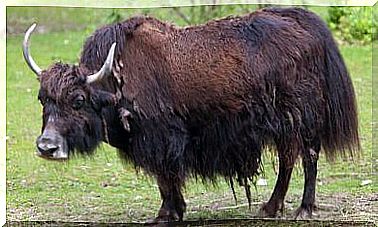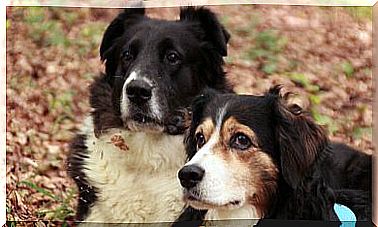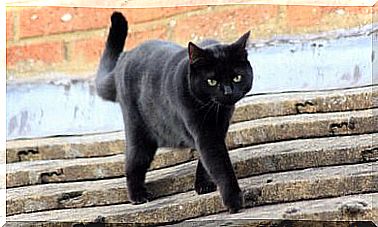The Muskrat: Reproduction And Behavior
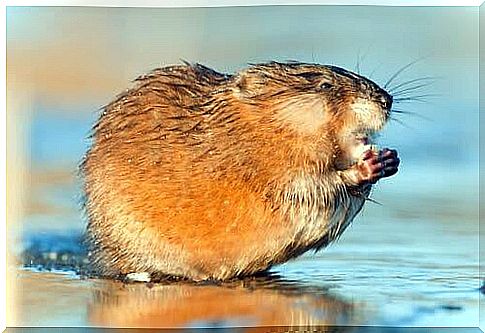
The muskrat is a large rodent, related to rats, mice and hamsters. Although muskrats are land animals, they prefer to live in environments very close to water.
Unfortunately, muskrats have been exploited by the fur industry for many years. Its soft coat makes specimens of this animal desirable by fashion industries that use animal skin.
An adult muskrat measures between 55 and 65 centimeters in length, with the tail being about half the total length of the body. In general, these rodents weigh between 1.5 and 2.5 kg.
The muskrat is native to North America. However, in the 20th century, they were introduced by man into the Eurasian region. For this reason, these rodents are also currently found in Ukraine, Russia, northern China and Mongolia.
Generally, they spend their lives in waters where they can always find 10 to 15 centimeters deep. For this reason, these rodents love swamps and marshes.
Musk rats like wet climates, as hot, arid climates are very negative for these animals. Due to their physiology, these rats prefer soft, moist terrain where they can always maintain a low body temperature.
To keep cool, the muskrat has developed a mechanism called heterothermia. Heterothermia allows these animals to keep their paws and tail cooler than their internal organs.
muskrat behavior
The muskrat is a highly social animal. For this reason, they live in large, very territorial family groups.
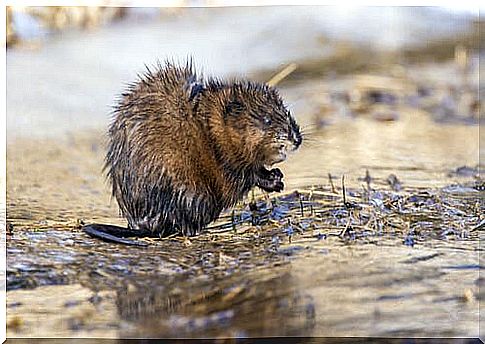
Unlike other large rodents, the muskrat does not change families throughout its life. On the contrary, they stay with the same family and strengthen it.
These rodents communicate through the secretion of musk. Musk is a fatty substance with an intense odor that is secreted by special glands, and from it comes the name of the species.
The odor of musk varies according to what the rodents want to communicate. However, its most common use is as a warning to attackers. Also, the muskrat has mainly nocturnal habits, but can sometimes be seen active during the day.
These rodents are omnivores and do not have a specific pattern for their diet. So the muskrat will eat anything that gets in its way.
According to researchers of the species, these rodents even practice cannibalism, if necessary. For this reason, only the strongest specimens survive.
Despite this, in general, these rats eat crabgrass , water lilies and different swamp roots. In addition, they also hunt small animals such as salamanders, snails, small fish and even young birds.
Although not a very large size, the muskrat eats a large amount of food. Daily, a specimen can consume one-third of its body weight in food.
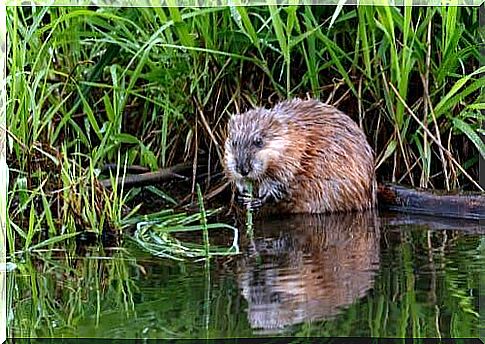
reproduction
Musk rats breed at any time of year except winter. The gestation of these rodents is 30 days. At each gestation, the female can give birth to 3 to 8 offspring. These puppies develop very quickly after birth and can reproduce in less than a year.
For parturition, rats climb mounds of plant waste that they build up in advance. These mounds have a height of approximately half a meter above the surface of the water.
Although the muskrat has predators, it is not in danger. Thanks to its high birth rate, the losses suffered are quickly recovered.
The muskrat has been exploited by the fur industry. Their uniform coat and large size made them targets of this cruel industry.
Fortunately, however, the exploitation of muskrat declined in recent years. Their behavior made them unsuitable for captive breeding.
In the coming years, animal protection groups hope to reduce the activities of the fur industry. Unlike the muskrat, however, mink and ermine are still cruelly bred for the exploitation of their skins.




